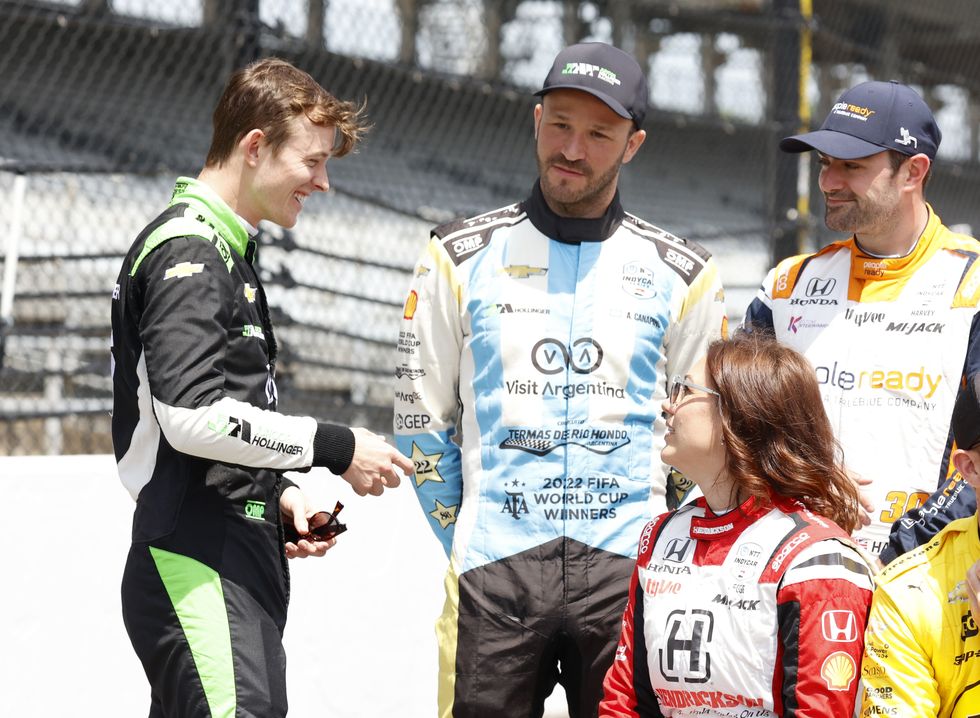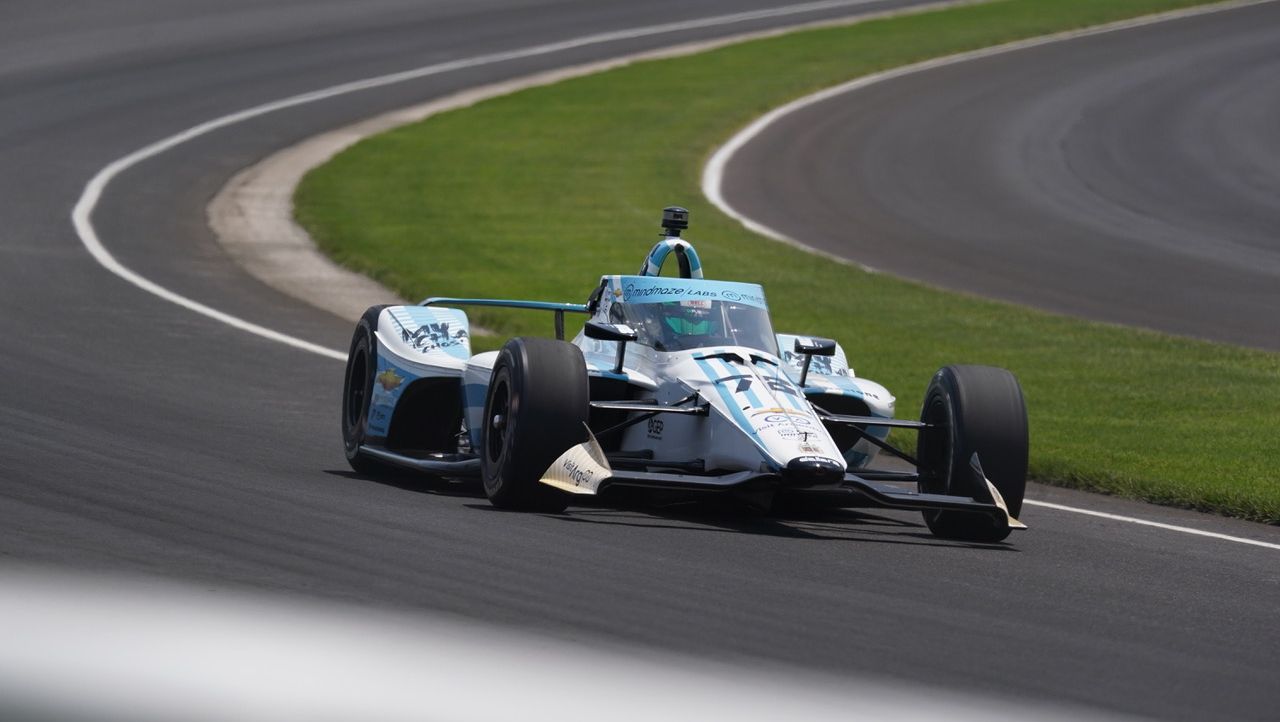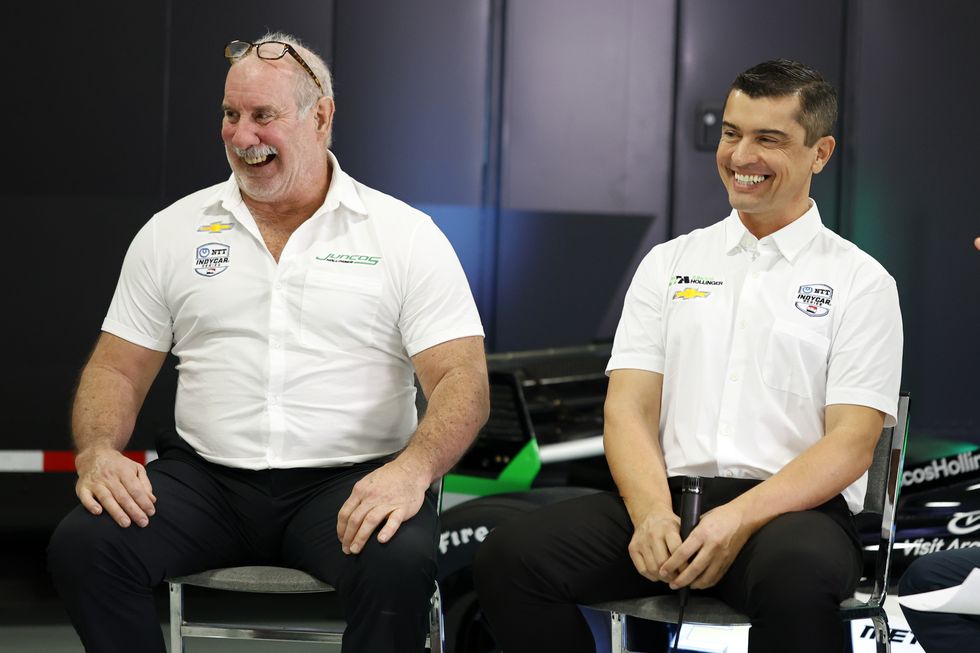- At the 107th running of the Indy 500, the No. 78 Juncos-Hollinger Racing Chevrolet of 33-year-old IndyCar rookie Agustin Canapino carries the colors of Argentina.
- The team fielding Canapino is owned by Argentinian Ricardo Juncos, with Brad Hollinger.
- Canapino is no stranger to the sports spotlight, as he was awarded the Olimpia de Oro 2018 award (over the likes or soccer superstar Lionel Messi) for the Argentine Sportsman of the Year.
National colors used in motor racing are a fascinating aspect of the sport, reflecting the pride and identity of different countries. Up to the 1960s, various nations associated specific colors with their racing teams, creating a rich tapestry of iconic liveries.
The association between Italy and the color red is deeply rooted in the country’s racing heritage, symbolizing passion, speed, and Italian pride. German race cars were white until the 750 kg maximum weight rule came into place in 1934. To take some pounds off the cars the paint was removed and the shiny aluminum became the silver color associated with the Teutonic cars.
British racing cars are dark green. Japanese racing teams often utilize white with red accents or the iconic red sun symbol. French blue is an unmistakable hue.
The role of sports in politics has also played a significant role throughout history, with nations utilizing sports as a platform to promote their political agendas, diplomatic relations, and national identity. The intersection of sports and politics and the relationship between sports and national culture can be observed in various contexts.
Argentina’s love for soccer is deeply intertwined with its national identity and politics. Soccer holds a significant place in Argentine culture, and the sport has often been utilized as a tool for political mobilization and expression. The Argentine national team’s successes, particularly in international tournaments like the FIFA World Cup, have been a source of immense national pride and unity. Political leaders in Argentina have recognized the power of soccer in garnering public support and have sometimes aligned themselves with the sport and its famous figures to gain political leverage.
A victory with national colors elevates the sport’s significance within society and fosters a passion among the youth. A national team’s success can also generate economic benefits, such as increased tourism, sponsorship opportunities, and investments in infrastructure. Furthermore, it provides a platform to showcase a country’s cultural heritage, traditions, and values to a global audience.
At the 107th running of the Indy 500, the No. 78 Juncos-Hollinger Racing Chevrolet of 33-year-old IndyCar rookie Agustin Canapino carries the colors of Argentina and features the three stars that symbolize the number of soccer World Cups the country has won.
Martin “Macoco” Alzaga Unzue—a racer from the Pampas of South America—and his Bugatti raced in the 1923 Indianapolis 500. Fellow countryman Raul Riganti raced in three Indy 500s between 1923 and 1940.
Now, it’s Canapino’s turn.
Canapino was awarded the Olimpia de Oro 2018 award (over the likes or soccer superstar Lionel Messi) for the Argentine Sportsman of the Year. He and Juan Manuel Fangio are the only racing drivers to win this national award.
Canapino started racing at 16 years old. Since then, he has won 15 national championships in production-based cars—what we might call Touring Cars—finished five times as runner-up in the standings, and seven times ended in third place at the end of the championships.
During 17 years of racing in Argentina, sometimes competing for multiple titles during the same season, he is the champion of champions.
In the Turismo Carretera Series in Argentina, Canapino’s popularity equals that of Jimmie Johnson and Dale Earnhardt in NASCAR. TC is a production car-based category and the world’s oldest active racing series. Juan Manuel Fangio, Carlos “Lole” Reutemann, Jose Maria “Pochito” Lopez, and Canapino are the most renowned Argentine race car drivers and national idols.
Asked why he made the move United States, Canapino said, “It is the biggest challenge of my life. To race among (Helio) Castroneves, (Scott) Dixon, and all the drivers that are champions in the most competitive series in the world is an opportunity that I could not say no to. Being able to race at the iconic oval will be a big accomplishment for me, the team, and the country.”
The team fielding Canapino is owned by Argentinian Ricardo Juncos, with Brad Hollinger. They are the paddock’s newest team. When asked about the choice of Canapino to drive the car at Indy, Juncos said, “He is a true cheval pur-sang (pure-breed racing horse). He has the natural ability to take the car to the limit, and his technical knowledge helps everyone to make the necessary adjustments for the car to go faster.”
Canapino, who never drove an open-wheel car before, has already demonstrated that he can adjust to the demands of IndyCar racing.
“Juncos-Hollinger is the smallest team on the grid,” Juncos said. “We are not there yet to compete on equal terms with the likes of Penske, Ganassi, Andretti, or Mclaren. Those teams have double or triple the amount of people and funds to race for the win.
“But regardless, we are racers at heart, giving a 110% to this event because the race ends on Lap 200. A lot of things can happen in this grueling event.”
On Sunday, millions of Argentines will watch the biggest spectacle in motorsports 5,000 miles away on their TVs. With a 90% inflation rate, a rocky government, and economic instability, the nation will cheer for the “Albicaleste.” This time it will not be Messi, but Canapino who will be asked to deliver the impossible.
Crossing the checkered flag in the mid-pack after 36 sets of tires and 125 gallons of fuel, wearing a fireproof suit with the same colors as the soccer jersey team will be a triumph. And an opportunity to learn, face the challenges and prepare for a better outcome soon.
Which is what the country hopes will happen next.
Guest columnist Ricardo Rodríguez-Long is founder and president of Hispanic Motor Press and host of the radio show Garage Latino.
Read the full article here






